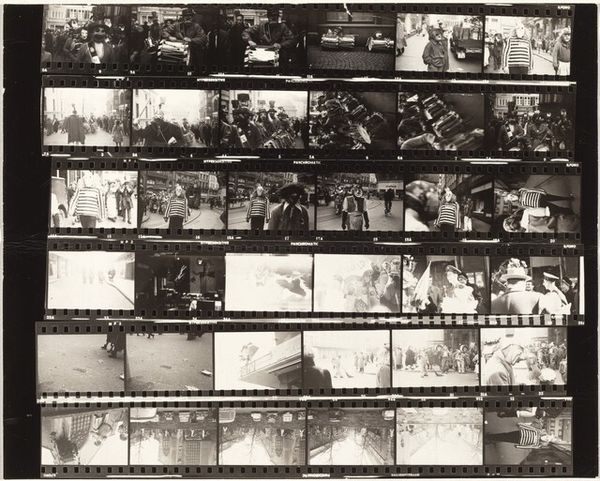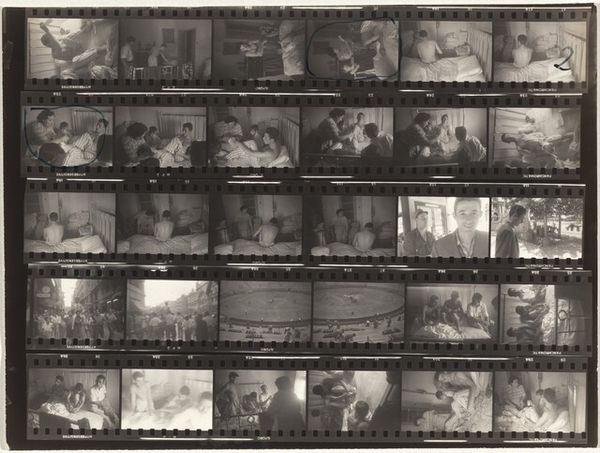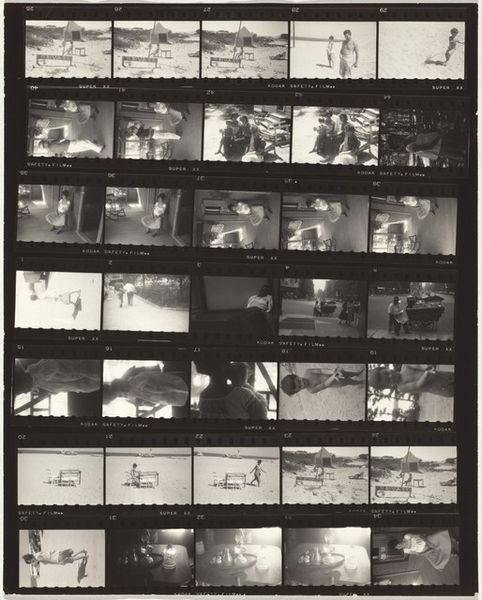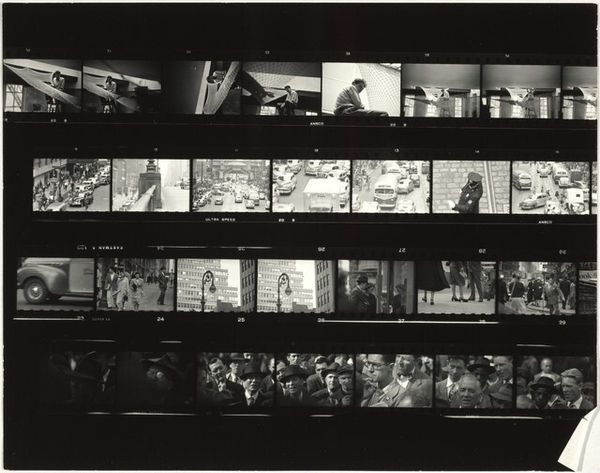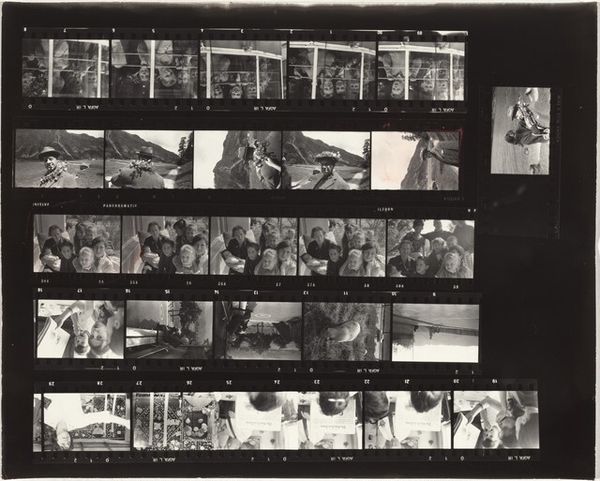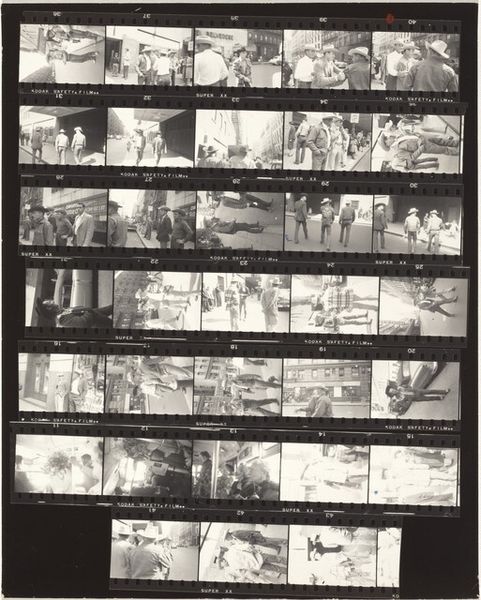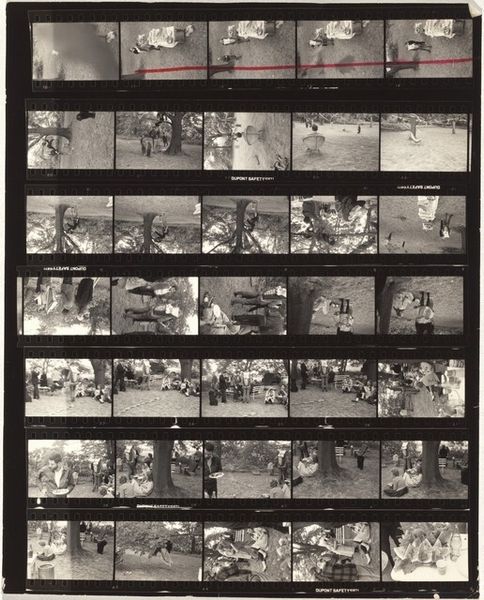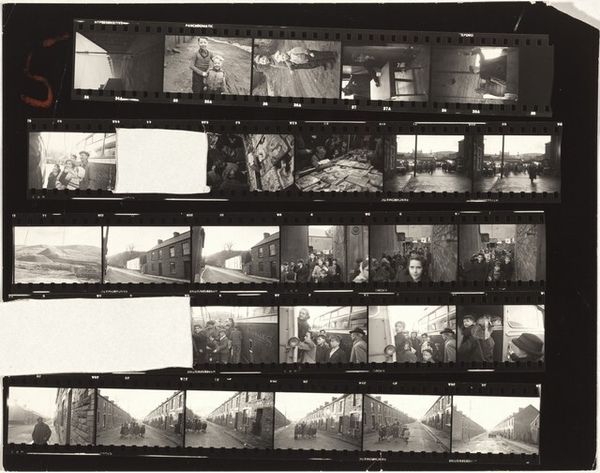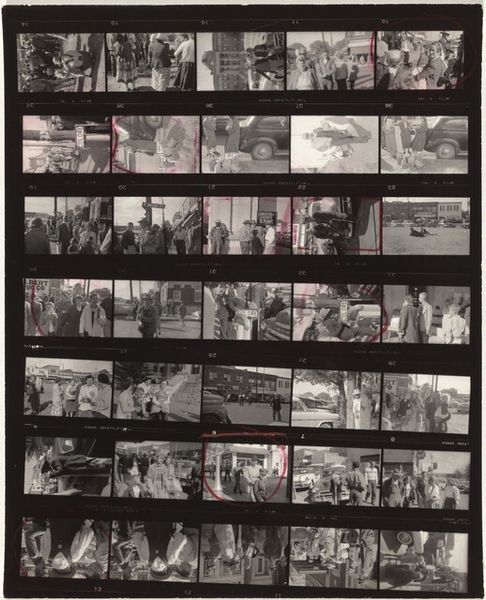
photography, gelatin-silver-print
#
landscape
#
street-photography
#
photography
#
historical photography
#
gelatin-silver-print
#
pop-art
#
cityscape
#
modernism
Dimensions: overall: 20.3 x 25.3 cm (8 x 9 15/16 in.)
Copyright: National Gallery of Art: CC0 1.0
Curator: Robert Frank’s contact sheet, “Coney Island no number,” from around 1950, is displayed before us. As a gelatin silver print, it gives us a unique look into Frank's photographic process. Editor: My initial reaction is that there's an immediate sense of documentary urgency here, it reveals so much. A cross-section of humanity trying to have fun, contrasted against stark reality in a segregated, unequal society. Curator: Exactly. Let’s delve into the composition. Notice the rows of frames – like a narrative storyboard – Frank capturing slices of life. This whole sheet shows, I believe, a compelling series of vignettes within the modern landscape of Coney Island. Editor: And consider the date, circa 1950, just after World War II and at the height of racial segregation. Frank, a Swiss-born Jew, certainly was influenced by the sociopolitical contexts in his adopted homeland. In Frame 23 you see the sharp relief of class disparity—an older Black man, wearing a hat, looking intently into the lens. Curator: Fascinating. Focusing on the tonal range in Frank's gelatin silver print. We witness the contrast between the light of a beachside setting and the heavy shadows on faces. How would you suggest this range impacts its feel? Editor: These stark lights and darks speak to the era. There is both literal exposure, of bodies enjoying the sun, and social exposure, which reveals inequality—visible reminders of marginalization, brought forth with these dramatic chiaroscuro. Look at the solitary woman resting in the frame closest to the bottom left. Her face is tired. The image’s proximity to crowds makes her alienation visible. Curator: And Frank also experiments with depth of field in these multiple frames. Editor: Yes, Frank has intentionally layered many formal decisions into a photograph with deep political commentary. The individual strips show various exposures and moments that highlight, for me, that sense of freedom and leisure in public places was still severely restricted at the time this photograph was taken. Curator: A beautiful analysis. It reveals the intricacies of his craft, highlighting his unique aesthetic that also captured profound societal dynamics. Editor: Agreed. Ultimately, the photograph offers insight into American identity as seen by an outsider during this particular sociohistorical moment.
Comments
No comments
Be the first to comment and join the conversation on the ultimate creative platform.
